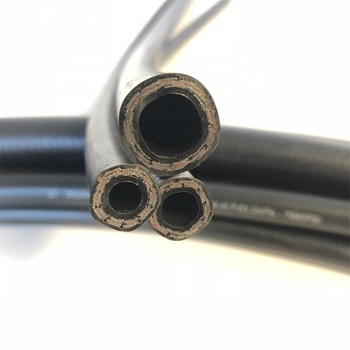335345435
Aug . 05, 2024 14:43 Back to list
Understanding the Basics of LPG Hoses and Their Essential Applications in Various Industries
Understanding LPG Hoses A Comprehensive Guide
Liquefied Petroleum Gas (LPG) is a popular fuel choice for various applications, including heating, cooking, and even powering vehicles. However, the safe and efficient use of LPG relies heavily on the quality and reliability of the equipment associated with it, particularly LPG hoses. In this article, we will explore what LPG hoses are, their construction, uses, and safety considerations.
What is an LPG Hose?
An LPG hose is a flexible tube designed to transport liquefied petroleum gas from one location to another. These hoses are specifically engineered to withstand the unique properties and pressures associated with LPG. They are necessary for connecting LPG storage tanks to appliances, such as grills, heaters, and gas stoves.
Construction of LPG Hoses
LPG hoses are typically constructed from a blend of synthetic rubber and thermoplastics, which provide excellent resistance to the corrosive effects of gas and other environmental factors. The hoses often feature multiple layers, including
1. Inner Liner This layer is in direct contact with the gas and is designed to be impermeable, preventing leakage. 2. Reinforcement Layer Made of materials like polyester or nylon, this layer provides strength and flexibility, allowing the hose to withstand high pressures and bending. 3. Outer Cover The outer layer is resistant to UV rays, ozone, and other environmental elements, protecting the inner layers from damage.
The typical diameter of LPG hoses varies, allowing them to accommodate different flow rates and applications. Generally, these hoses are color-coded, often yellow or orange, to indicate their specific use related to gas.
Uses of LPG Hoses
what is lpg hose

LPG hoses are commonly used in various settings, including
- Residential Cooking Connecting gas stoves and ovens to gas tanks. - Outdoor Grilling Linking barbecue grills to propane tanks. - Heating Systems Serving as a connection for heating appliances, such as furnaces and space heaters. - Commercial Uses Utilized in restaurants and catering businesses for cooking and heating.
LPG hoses also have applications in industrial settings, such as welding and manufacturing processes, where gas is required.
Safety Considerations
Safety is paramount when dealing with LPG and its hoses. Here are some essential safety considerations
1. Regular Inspection LPG hoses should be inspected regularly for signs of wear, cracks, or damage. Any compromised hoses should be replaced immediately to prevent leaks. 2. Proper Installation Hoses must be installed correctly to avoid unnecessary strain or bending, which can lead to failure. 3. Use Approved Hoses Always use hoses that comply with local and international standards. Look for certifications from organizations such as the American Society for Testing and Materials (ASTM) and Underwriters Laboratories (UL). 4. Avoid Overheating LPG hoses should not be placed in areas where they can be exposed to extreme heat or direct sunlight for prolonged periods. 5. Emergency Procedures Familiarize yourself with emergency procedures in case of a gas leak, including shutting off the gas supply and ventilating the area.
Conclusion
LPG hoses are vital components in the safe and efficient use of liquefied petroleum gas, playing a crucial role in various domestic and commercial applications. Understanding their construction, uses, and safety considerations is essential for consumers and businesses alike. By prioritizing the maintenance and safety of LPG hoses, users can ensure a safe environment while enjoying the benefits of this versatile fuel source.
-
SAE 100 R17 Black Smooth Cover Hydraulic Hose
NewsMar.07,2025
-
SAE 100 R17 Black Smooth Cover Hydraulic Hose
NewsMar.07,2025
-
SAE 100 R17 Black Smooth Cover Hydraulic Hose
NewsMar.07,2025
-
SAE 100 R17 Black Smooth Cover Hydraulic Hose
NewsMar.07,2025
-
SAE 100 R17 Black Smooth Cover Hydraulic Hose
NewsMar.07,2025
-
steel wire braided hydraulic hose
NewsMar.07,2025



